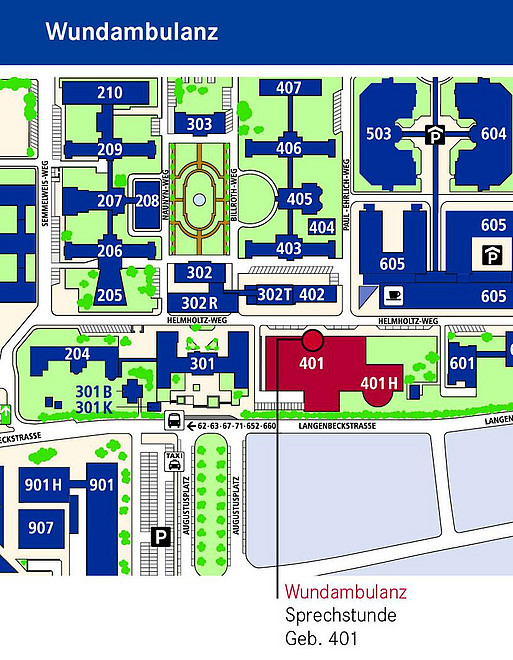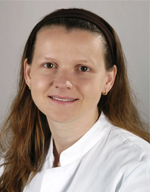Outpatient clinic for wound treatment (focus on wound healing)
The outpatient clinic for wound treatment is organized by the Department of Dermatology (director: Prof. S. Grabbe) in close cooperation with the CTH. The aim is to optimize the translational research of the cohort and to activate new impulses and potentials for treatment innovations.
With 57-80% of all chronic ulcerations, Ulcus cruris venosum (venous leg ulcer) represents the most common cause of impaired wound healing. Primary reason for this chronic venous insufficiency is the functional loss of the venous/vain valves and, secondary reason, the obstruction and destruction of the vain, for example by a thrombosis. Therefore, the Ulcus cruris (venous leg ulcer) is a longterm complication in thrombosis patients. Thrombosis prophylaxis is an important preventive measure to avoid ulcer formation.
Diagnostics and treatment services (also interdisciplinary)
- diagnostics/medical clarification of venous problems
- diagnostics/medical clarification of disturbed blood circulation as well as vascular diagnostics
- diagnostics/medical clarification of other possible reasons for the chronic wound
- advanced wound care/treatment
- biosurgical maggot therapy
- VAC therapy
- ulcer surgery
Wound consultation (by appointment)
During this consultation a precise medical clarification of the cause for the chronic wound takes place. Hereby, we can rely on the good interdisciplinary cooperation within the University Medical Center.
We have all modern possibilities for the diagnostics of venous diseases including colour duplex sonography. Other radiological (angiography), scintigraphic (lymph drainage scintigraphy) and magnetic resonance tomographic (MR angiography) vascular diagnostics are offered by the specialist departments of the University Medical Center. Before hospitalization a bacterial diagnostic to exclude MRSA colonisation is undertaken.
After clarification of the reason for the wound follows an individual therapy in accordance with advanced wound treatment. If the chronic wound has healed well a definitive wound closure (e.g. surgical treatment with a split skin-/Mesh-/Reverdin graft, possibly in combination with the vacuum therapy) is aimed at.
How to reach us:
To arrange a personal appointment, please call our office directly.You can reach us via our secretariat 06131 17-2925
E-Mail: haut-wundnetz@unimedizin-mainz.de
Here you will find the wound clinic:
University Medical Center MainzDermatology / Center for Thrombosis and Hemostasis
Building 401
Langenbeckstaße 1
D-55131 Mainz

Head of Outpatient clinic for wound treatment

Bettina Kleis-Fischer, MD
Specialist in Dermatology and Venereology, additional Allergology and Phlebology
Deputy Head of Outpatient clinic for wound treatment

Carolin-S. Morcinietz, MD
Specialist in Dermatology und Venerology
Medical assistants

Elva Flores-Wendt, MD
Medical assistant
Elise Langer, MD
Assistant doctor

Theodora Tsimpaki
Physician
Wound experts
Elke Butzen-Wagner
- Teacher of nursing
- Health educator
- Wound care therapist ICW®
- Network Facilitator for Interdisciplinary networks in healthcare

Irina Fürstenau
Wound specialist